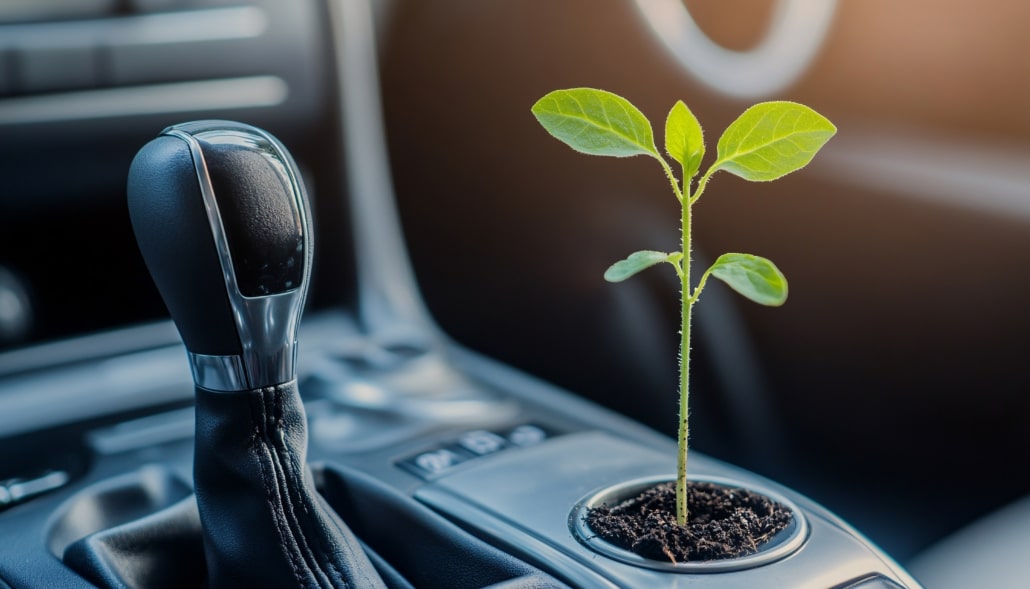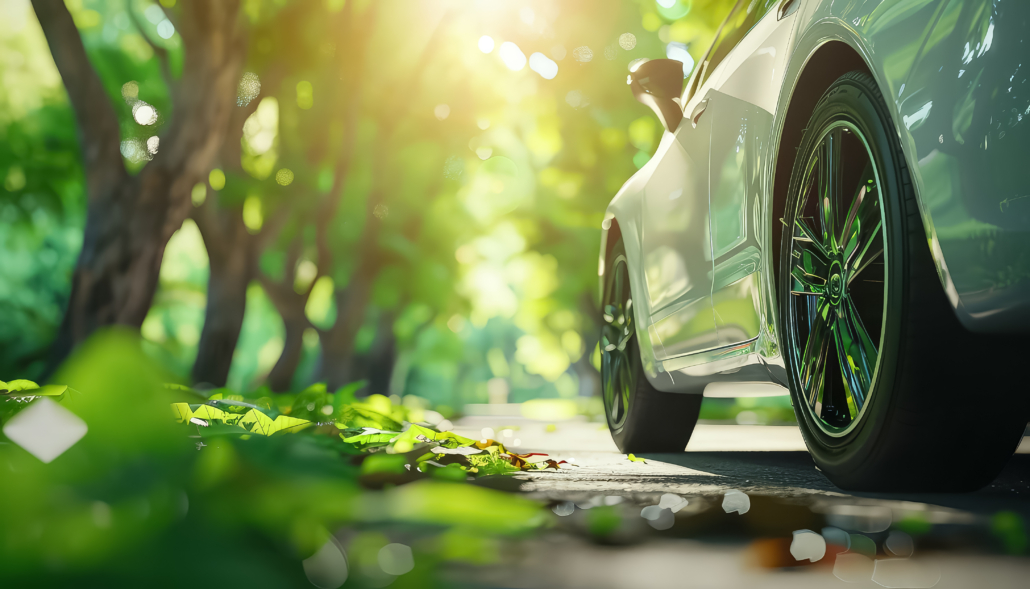We have the pleasure of discussing the challenges and opportunities of adopting circular models within the Automotive Sector with Mino Yamamoto, Circular Economy Director at Valeo. We’ll tell you all about it!
1. What is Valeo’s position on the Circular Economy?
Innovation for the mobility of tomorrow will be sustainable or it will not be at all. That’s why at Valeo, decarbonization goes hand in hand with the circular economy. We take into account the entire product life cycle by involving our entire value chain in sustainable innovation.
As our CEO reminds us, “For more than 20 years, our technology, governance, and environmental and social management choices have illustrated our desire to address the challenges of sustainable development in their entirety.”
Obviously, the priority of the automotive sector is to reduce CO2 emissions, and therefore to decarbonize the usage phase. At Valeo, 60% of our sales already contribute to this goal thanks to the electrification and thermal management of batteries for all types of road mobility. In 2021, we launched our CAP 50 Decarbonization Program. Valeo is also a signatory of the “Business Ambition for 1.5°C” campaign, which brings together companies committed to achieving carbon neutrality by 2050 using the strict framework of the Science Based Targets initiative.
But we are going further. With our circular economy program, we are going to close the loop by giving more value to end-of-life products. Here, we have a dual challenge: to retain the value of the assembled product for as long as possible and, as a last resort, to preserve at least the value of its materials through recycling. In 2023, we launched a circular economy program based on the 4Rs and we’re going full speed ahead! Our 4Rs are first and foremost Robustify, to maximize the durability of the product; then Repair and Remanufacture, to refurbish products at the end of their life; and finally, Recycle, to be activated as a last resort to return to the raw material to be repurposed into new products. These 4Rs have been designed to enhance our core business: the product. Our circular mission is very clear: to extend the lifespan of the final assembled product for as long as possible in order to retain as much of its value as possible. To achieve our circular ambition, we must act on 3 action initiatives: Business, Design & Operations.

2. How have you evaluated the “right” circular model and therefore the resulting economic model?
Let’s start with Business. The R’s of Repair and Reman for a sustainable after-sales service. This is already concrete action that allows us to act today to extend the life of products currently in circulation.
Remanufacturing is at the center of our circular strategy because it allows us to produce parts as good as new, while using end-of-life components instead of new materials. This means an average saving of 80% of new materials.
Moreover, we already have 40 years of experience in the remanufacturing of mechanical products, such as alternators and clutches for passenger vehicles and heavy goods vehicles. We have developed an “all brands” program and we rely on our global industrial presence. We currently remanufacture one million products per year and aim to double this figure by 2030, thanks to:
- Optimization of the current product portfolio, under the leadership of our global remanufacturing center of excellence in Czechowice (Poland). Our multi-product Polish site brings together mechanical and mechatronic activities, in order to massify flows, skills (disassembly, cleaning, repair, assembly, and testing) and of course investments.
- The expansion of the product portfolio to support the development of on-board electronics and advanced driver assistance systems (ADAS) — including the launch of the world’s first reconditioned front camera. This success is the work of our circular electronics laboratory in Nevers, France. For profitability, we have of course selected these intervention cases in order to systematize and industrialize repair operations.
- The development of products for new forms of mobility with motors and batteries for electric bicycle fleets, starting with the Parisian Vélibs.

3. Can you give us some examples to illustrate how eco-design permeates everyday activity at Valeo?
As mentioned earlier, in terms of business, today we remanufacture about 1 million parts per year. By 2030, we will double our capacity. This is the “low hanging fruit” with a very strong impact in the short term. It is a real team effort between our “after-sales” department in business development and our 3 operational divisions.
Now let’s move on to the issues related to Design. Today, we are at a turning point because the products we put on the market will be the ones we will have to reuse, repair, remanufacture, and recycle in 10 or 20 years’ time. We have to act now because the circular economy starts at the design stage. 80% of a product’s environmental impact is determined during the design phase! Thus, on the eco-design aspect, we are putting directives in place as well as indicators to integrate principles favoring the circularity of our products from the design stage (dismantlability, reparability, remanufacturability, recyclability of materials and incorporation of materials from recycling, etc.). We are working to set objectives at the level of R&D and Projects.
Finally, let’s talk a little about Operations. With regard to our industrial sites, we are seeking to optimize their resource consumption through our programs dedicated to water conservation and waste recovery. Recycling also means building the right ecosystem with the entire value chain to ensure our sovereignty over certain sensitive materials. Today, our waste constitutes a veritable urban mine that we must exploit. That is why Valeo is a stakeholder in the Magnolia project, dedicated to the recycling of permanent magnets. This project brings together collectors, recyclers, and parts manufacturers to set up a first pilot line in France!
4. Is the circular economy now integrated and applied by everyone, or is it still a marginal principle?
Today, everyone has made the shift to decarbonization. The circular economy, on the other hand, is only at the very beginning of its development. We are seeing many promising initiatives:
- Manufacturers are opening units dedicated to the management of the circular economy, and specifications increasingly refer to the concepts of “dismantlability,” “repairability,” or “remanufacturing.”
- Garage owners are also increasingly inclined to offer parts from the circular economy, as reported by the PIEC Mobilians-Gipa Barometer Report from May 24
But a great deal of educational work remains if we want to scale the circular economy:
- Educating users about the quality and performance of “second life” products and overcoming prejudices. Because remanufacturing and repair are real industrial processes at Valeo.
- Communicating and raising awareness among all stakeholders in the sector. Today, private players are aware of the need for circularity in our industry. However, we will need governments, regulators, and the public sector to put regulatory framework in place to accelerate the circular economy. For example, in France, a law requires garage owners to systematically offer a part from the circular economy and explains the benefit of these practices. But this is only the beginning!
5. What is your strategy for increasing the upstream deposits of your remanufacturing plants?
Collecting material is at the heart of the matter. The circular machine will not turn if we do not collect the end-of-life parts to be remanufactured! To develop remanufacturing, we need to continue to scale. And that requires collaboration between the private and public sectors:

- In order to build the right structure for collection, incentives must be put in place to recover parts— not only in end-of-life vehicle dismantling centers, but also in garages on a systematic basis beyond the standard exchange.
- After that, the challenge is to move from the national to the international level. To do so, a very simple problem must be solved. Today, end-of-life parts are considered waste and cannot move freely across borders. Together, we must work together with regulators to review their status to allow them to live multiple lives!
- Finally, we can’t forget to boost demand by encouraging end users—hence the importance of education.
Moreover, if we look a little further, consumers who buy a carbon-free, i.e. electric, vehicle used to receive subsidies. Looking forward, applying these same benefits to purchases of circular vehicles, which are equipped with circularly designed parts, i.e. parts that can be dismantled and recycled, can help the movement!
6. What are the key elements to anticipate in Design?
The current issues, which will only have an impact in the future, are related to the design of our products in such a way that they promote circularity. The implementation of circular criteria often leads to additional costs, and therefore questions that must be answered by the industry stakeholders like:
- “Who pays?”
- “How do we valorize it?”
- “What is the economic model between original equipment and after-sales?”
One of the keys is to adopt an approach that takes the entire lifespan of the product into account in order to fully exploit these circular approaches, therefore finding a way to work together (internally and between stakeholders) and identifying the right way to distribute value throughout the product life cycle.
Because designing circularly means innovating for tomorrow, with real expertise behind it.
7. Any final words?
In conclusion, circularity in the automotive and mobility industry are major societal issues. We all have a role to play!
At Valeo, our mission is to extend the lifespan of final assembled products for as long as possible to retain their value. First, by extending the lifespan of products already in circulation through reuse, repair, and remanufacturing. This provides an affordable, “as good as new” solution without compromising quality or performance for the end user or our planet.
Secondly, let’s be creative in making our future generations of products more circular. Let’s innovate, innovate, innovate! Let’s use our expertise to invent products that can have several lives.
Finally, building the right infrastructure to keep the circular machine running is key. We must work hand in hand between the private and public sectors because it’s also about guaranteeing our sovereignty. Products at the end of their life and raw recycled materials are at the heart of the matter.
Ultimately, promoting the circular economy is a team effort. Together, in our businesses and in our private lives, let us all be actors in this transformation to build the sustainable mobility of tomorrow.

Mino Yamamoto
Circular Economy Director
Valeo










